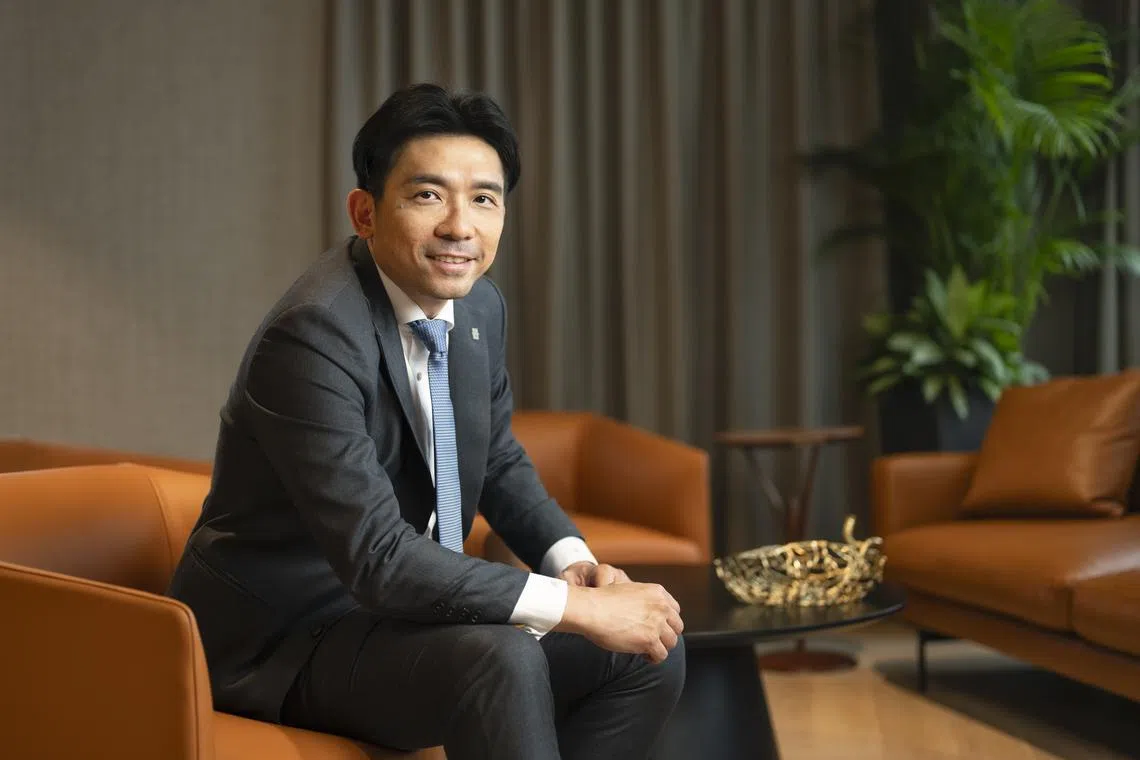UOB leverages AI for data-centric approach to optimising portfolio allocation
Having already implemented the model in Singapore and Malaysia, the bank plans to expand it to other markets in the region

UOB, possibly Singapore’s first local bank to use artificial intelligence (AI) and big data analytics to allocate capital in its corporate banking division, is looking to expand its portfolio optimisation tool to other markets in South-east Asia.
So far, it has deployed the technology in Singapore and Malaysia, in 2023 and this year, respectively.
Currently operational across various industries under UOB’s corporate banking arm in Singapore, the AI Model for Portfolio Optimisation is projected to increase the bank’s corporate banking revenue in the Republic by 3 to 5 per cent from last year’s performance baseline, said Leong Yung Chee, UOB’s head of group corporate banking.
He also noted that the division’s return on risk-weighted assets (RoRWA) has improved, compared with the performance baseline in 2023. “This means that the increase in revenue did not come at the expense of RoRWA – in fact, portfolio risk has been better optimised.”
With the rollout of this model that leverages AI to optimise capital allocation by balancing risk-weighted assets and revenue growth, UOB is spearheading a major shift away from traditional optimisation methods that rely primarily on subjective judgment.
Collaborating for efficiency
The AI model ingests data spanning multiple years, including the division’s income streams and customers’ credit assessments, integrated from various big data sources. This information is then averaged annually and organised into portfolio buckets.
Leong noted that the model can be adapted to different countries by tweaking the parameters of the data that is fed into it.
“Different market conditions are factored in the form of different business constraints fed into the model,” he explained. “Portfolio buckets may also be grouped differently depending on how other markets’ business segments allocate budgeting and performance targets.”
By learning from this aggregated data, the model presents a spectrum of portfolios representing the best trade-offs between RoRWA and revenue growth.
In doing so, it highlights promising industry sectors and customer segments, enabling the bank to channel capital into financial products and services that are offered to companies under these portfolio categories.
While final decisions rest with management, the AI model provides valuable guidance for targeted capital allocations, assisting UOB in achieving balanced risk-adjusted returns.
“As for other tangible benefits, such as man-hour savings (and) other cost savings, these are difficult to determine based on the one-year period of implementation,” Leong said.
The AI Model for Portfolio Optimisation was developed by UOB’s data management office, which began work on it by tapping the corporate banking division’s expertise to define business objectives, considerations and constraints. This helped to sift out the relevant data to feed into the algorithms.
The process then continued with an iterative approach, with the data management office and corporate banking division working closely to refine business constraints and examine portfolio outputs until satisfactory results were achieved.
The main challenge “was to wrangle the millions of rows of data, build a pipeline to ingest, clean and aggregate (them)”, said Alvin Eng, UOB’s head of enterprise AI and analytics transformation.

Championing AI at scale
UOB’s commitment to utilising scalable AI solutions was recognised in July this year, when it earned the Singapore Domestic AI Initiative of the Year and Singapore Domestic Digital Transformation Bank of the Year awards at Asian Banking & Finance magazine’s Wholesale Banking Awards.
Another example of the bank using AI for data-driven decisions is its cash-in-transit solution, developed jointly by its data management office, group channels and digitalisation division, and group technology and operations unit.
AI and machine learning are employed to optimise cash replenishment routes and schedules. This enhances customer experience by increasing cash availability and reducing downtime across all types of self-service banking machines in Singapore.
The reduction in the number of trips also decreases the time spent on the road by the cash replenishment team; this supports UOB’s sustainability goals by reducing the carbon footprint for both the bank and its customers.
Eng said: “We are in a truly exciting time to be able to use AI technologies to expand our capabilities to sustain business growth. By collaborating across different disciplines and thinking out of the box, we look forward to more exciting initiatives in the future.”
These collaborations can be in the areas of revenue uplift, risk management and productivity enhancement.
“The bank’s data architecture aims for a unified, scalable ecosystem enabling real-time analytics and seamless platform integration,” he added.

Decoding Asia newsletter: your guide to navigating Asia in a new global order. Sign up here to get Decoding Asia newsletter. Delivered to your inbox. Free.
Copyright SPH Media. All rights reserved.




